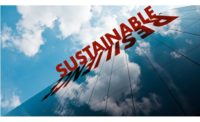Resiliency? You can’t go anywhere, read a headline, see the cover of a magazine, or attend any conference or symposium without this being the topic of the day. Recent conferences on architecture, healthcare, real estate, mission critical and more have all led with this topic. They used to lead with sustainability (and/or LEED). Is this the same progression like we saw with global warming becoming better defined as climate change?
What exactly is resiliency and how does it relate to sustainability? Does it replace sustainability?
Resiliency, as defined by a few simple words, is the ability to bounce back from adversity. It is planning and preparedness for manmade or natural disasters/events. These include, but are not limited to, terrorism, extreme weather events (drought, tornadoes, hurricanes, etc.) and the failure of critical (and non-critical) systems or infrastructure. Adaptability and vulnerability are other key words in the discussion.
Resiliency’s relevance to sustainability may be of concern to those in the environmental movement. For some, resiliency may seem to have deflected the discussion from sustainability. Should we be worried if we only focus on preparing for climate change (being resilient)? Are we then abandoning the concept of building and living sustainably to help prevent climate change?
Let’s certainly not dispense with sustainability. But we do need to be prepared for what our world is delivering. We have seen many extreme weather events in recent years, and one can argue on both sides of that discussion as to their cause. Whatever you personally attribute them to, though, they are happening. In Dayton, Ohio, in the past two months our interstates have completely closed due to flooding—twice. It’s something I have not seen in my 35 years here. Also, our world certainly isn’t the same as it was just 13 years ago prior to last month’s anniversary of 9/11. Planning and preparing for any of this is smart and responsible, and it is an example of resiliency.
What are we doing as planners, designers and constructors of the built environment to make certain our hospitals will operate, our neighborhoods will function and our infrastructure will support quick and effective recovery from any such manmade or natural event? What must we consider in our designs to make certain they will be adaptable for future change? Should our local municipal (and other) buildings be designed for more than just administrative functions? Should they be capable of quickly converting to neighborhood shelters when a disaster occurs?
Should local, regional and state planners take into account how effective a response will be when relying on our aging water, sewer and other utility infrastructure? Don’t just tack onto the system. Address upgrade and replacement needs before catastrophe occurs. A “What if?” scenario needs to be a part of the discussion for any project team.
Worldwide, our cities are becoming more populated. In 15 years they are expected to house more than 5 billion people, well beyond 50 percent of the projected population. In the U.S., 80 percent of our population is currently considered to be urban, with more than 50 percent of this urban population living in only our top 48 urban areas. That’s 130 million people! Have we planned and prepared enough to appropriately deal with these numbers?
The Los Angeles-Long Beach-Santa Ana metropolitan area has our highest population density with nearly 7,000 people per square mile (U.S. Census data). Can you consider this area to be sustainable (i.e., an implied high-density use of infrastructure versus sprawl)? And has it been designed to be resilient? Can it quickly bounce back from a Pacific tidal wave, an earthquake, a manmade act of terror? Is the underlying fabric of all of our communities—utility and transportation infrastructure, healthcare/hospitals, water and food delivery systems, etc.—capable of bringing life as we know it quickly back from a catastrophe?
Planning, designing and building to anticipate threats, hazards and disasters helps foster stronger, safer communities that are better equipped to withstand both the anticipated and unforeseen. Resiliency certainly is then a foundation for creating lasting sustainable solutions. For this and the many other reasons cited above, we are obligated to plan resiliency into our projects.






